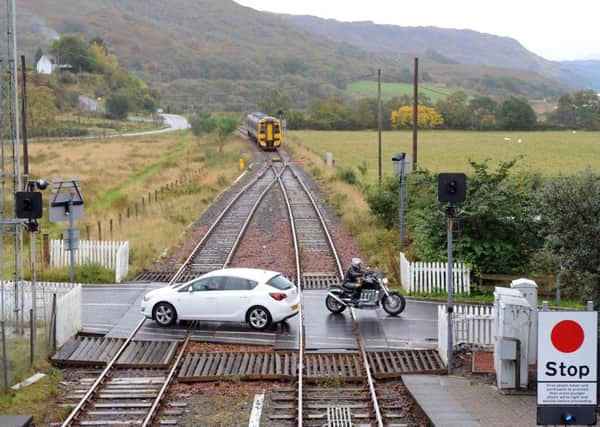Drivers caught jumping crossing lights doubles


Mobile camera vans used by British Transport Police (BTP) snapped 293 motorists driving through warning lights at Scottish crossings between January and November last year, compared to 144 for the whole of 2012. Last year’s total is also more than four times that of 2010.
The Scottish Law Commission has described level crossings as presenting the “largest single risk of catastrophic train accident in Great Britain”.
Advertisement
Hide AdAdvertisement
Hide AdNear misses last year included a lorry driver allegedly reversing on to a crossing at Kingsknowe in Edinburgh in September. The lorry became entangled in the crossing barriers as they lowered, three seconds before a train arrived, but there was no collision.
BTP said it had caught a greater proportion of offenders by deploying a second van this year. Both patrol several crossings a day.
The initial van – the first of its type in Britain – was introduced after all three people in a car were killed when it was hit by a train at Halkirk in Caithness in 2009. Two years earlier, two teenagers were killed in a car at a crossing at Delny in Easter Ross.
BTP said Network Rail planned to increase the number of fixed cameras at crossings from the previous eight – so drivers would have a greater chance of being caught.
Those convicted face a minimum fine of £100 and three penalty points added to their licence.
Crossings where the highest numbers of motorists have been caught this year include at Logans Road in Motherwell, Cornton between Stirling and Bridge of Allan, and Stevenston in Ayrshire.
Superintendent John McBride of BTP, said: “The more we deploy the vans, the more of these detections we will see. We have not had this focus on level crossings before.
“This is not about chasing numbers, but educating drivers. Near misses cause train delays which disrupts passengers. The vans are trying to protect vehicle drivers and rail passengers, to help people get to work and the economy of the country.
Advertisement
Hide AdAdvertisement
Hide Ad“However, the vans are an interim step, and in time there will be more fixed site cameras. Network Rail is trying to improve level crossing safety by re-engineering them, which includes cameras. The numbers are dependent on their programme, but there could be a lot more of them.”
Motoring groups backed the crackdown, but said replacing crossings with bridges and underpasses was the long-term solution.
Neil Greig, the Scotland-based policy and research director of the Institute of Advanced Motorists, said: “Having tried educating drivers, it makes sense that BTP are now moving to enforcement.
“The IAM supports the use of cameras at the busiest crossings, and high-profile mobile units will almost certainly reduce risky driving. It remains to be seen, however, how long lasting the effect is after the cameras have moved on.
“In the long term, the best solution is fewer unmanned crossings and more underpasses or bridges. That will be very expensive and difficult to fund and Network Rail have limited funds.”